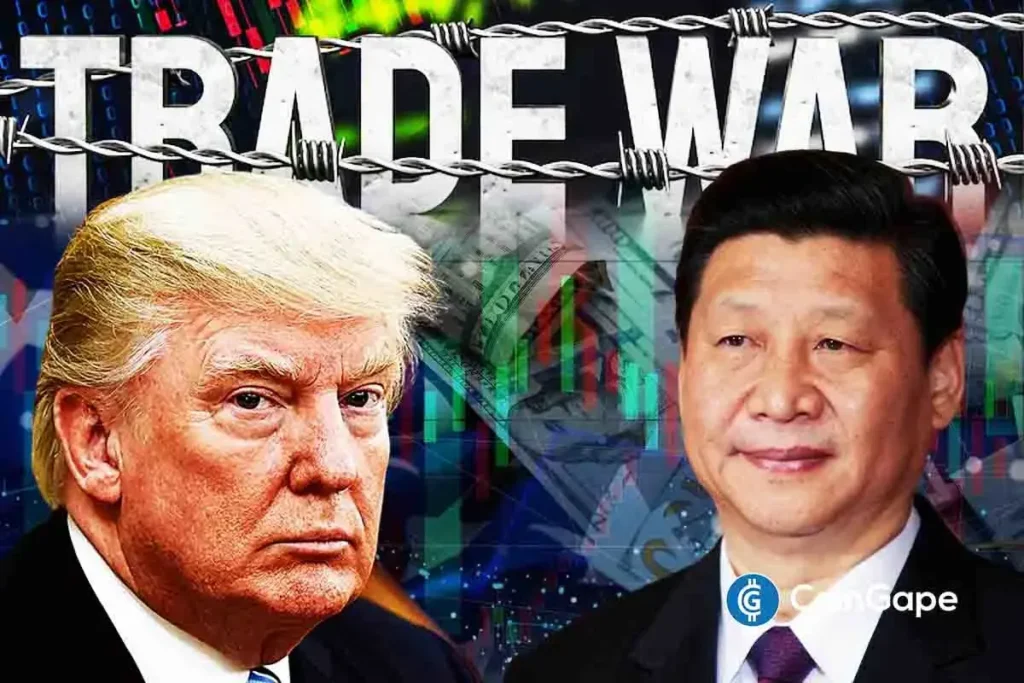US-China Tariff Negotiations: A New Diplomatic Push
The ongoing economic challenges between the United States and China have prompted a renewed effort from the Trump administration to engage in tariff negotiations. Recent reports from Chinese state-affiliated media indicate that President Donald Trump has utilized various diplomatic channels to reach out to Beijing, signaling a possible thaw in trade tensions. This article explores the implications of these new diplomatic initiatives, the motivations behind them, and the outlook for US-China trade relations.
Renewed Diplomatic Efforts
According to Yuyuantantian, a Weibo account associated with China Central Television, multiple contacts have been initiated by the US in recent weeks. Although details regarding these communications remain scarce, the reports suggest a willingness from the Trump administration to revisit discussions around the wide-ranging tariffs imposed on Chinese goods. These tariffs have remained a focal point of the ongoing trade dispute, impacting both economies substantially. Even though officials in Washington have not publicly confirmed these outreach efforts, there appears to be keen interest in reopening trade dialogues.
Trump’s Commitment to Negotiation
President Trump has consistently emphasized the importance of establishing a fair trade relationship with China. During a recent Cabinet meeting, he highlighted declining cargo turnover between the two nations, stating this may prompt China to engage in negotiations. Trump’s remarks reflect an underlying strategy of combining economic indicators with diplomatic outreach, aiming to create conditions favorable for renewed discussions. He conveyed a desire to communicate directly with Chinese President Xi Jinping, although no timeline for such a discussion has been proposed.
The Role of Economic Pressures
Economic pressures in the United States have intensified, with reports indicating a contraction in the economy during the first quarter, marking the first downturn since 2022. Factors such as decreased consumer spending and increased imports before new tariffs have contributed to this decline. Alongside these economic challenges, US Treasury Secretary Scott Bessent urged Beijing to make the initial move toward de-escalating trade tensions. This call for action places the onus on China while highlighting the urgency felt within the Trump administration to reinvigorate economic growth.
China’s Perception of US Eagerness
In contrasting terms, Chinese media depicts the US as the more eager participant in the ongoing negotiation dance. Reports emphasize China’s willingness to observe developments without making any immediate commitments until it sees "meaningful measures" from the US. This cautious stance reflects a broader strategy within Chinese leadership, particularly in light of current economic and political pressures facing the Trump administration. Analysts in China have suggested that they do not feel compelled to respond unless there is tangible evidence of policy changes from Washington.
The Uncertain Trade Landscape
As the trade relationship between the US and China remains fraught with uncertainty, recent statistics highlight a slump in consumer spending and trade activity. The current landscape has stirred speculation about potential negotiation outcomes and their implications for the global economy. Interestingly, some analysts indicate that any easing of trade tensions could bring about a significant recovery in alternative markets, such as cryptocurrencies. The White House has also floated the idea of using tariff revenues to invest in digital currencies, indicating a shift in regulatory approaches. However, this proposal remains in preliminary discussions.
Conclusion: The Path Ahead
At present, there is no confirmed meeting scheduled between US and Chinese officials, but both sides are keenly monitoring each other’s moves. The global trade environment is in a state of flux, and negotiations over tariffs could play a crucial role in shaping future economic relationships. As the Trump administration navigates through these complexities, the balance between aggressive diplomacy and pragmatic trade policies will be pivotal. Ultimately, the forthcoming months will provide significant insight into the potential for a constructive resolution to the ongoing trade disputes and the broader economic implications for both nations.
This renewed diplomatic effort is not just a matter of tariff talks; it’s a crucial moment that could redefine US-China relations and set the stage for future economic collaboration or continued conflict.


